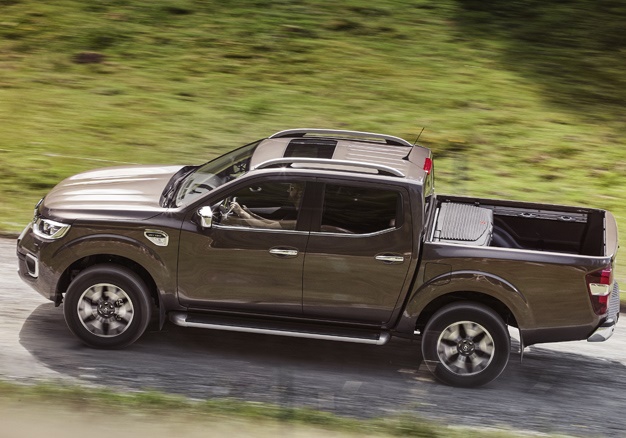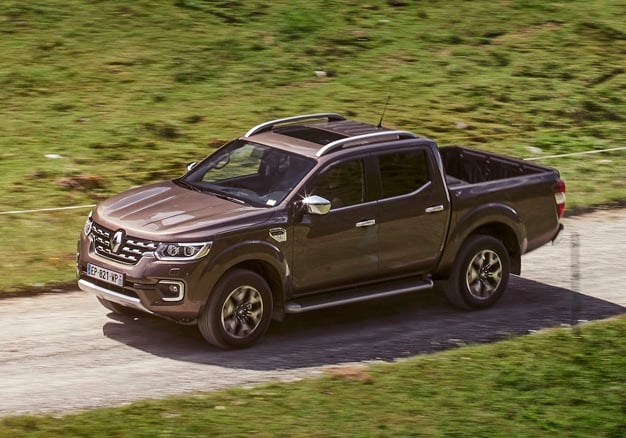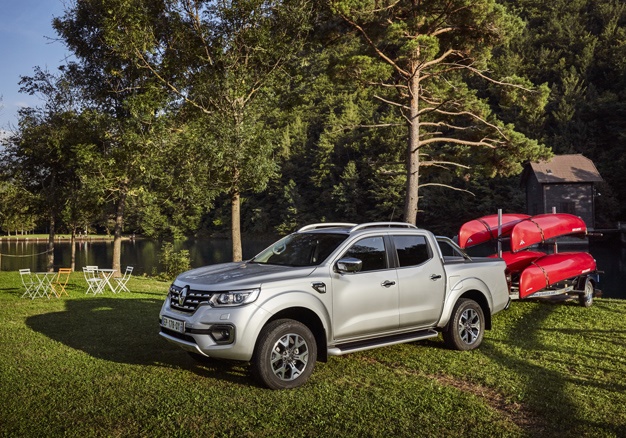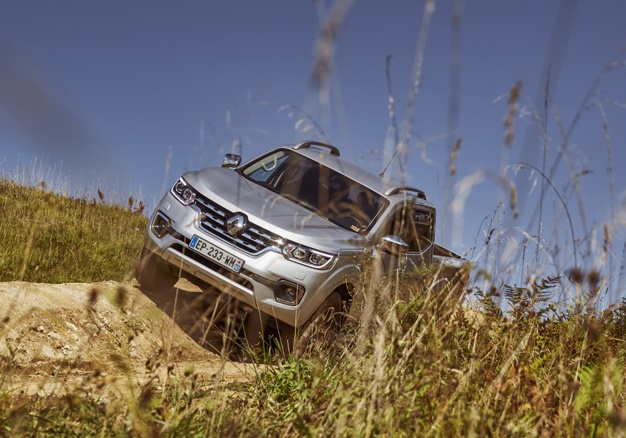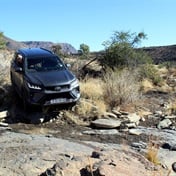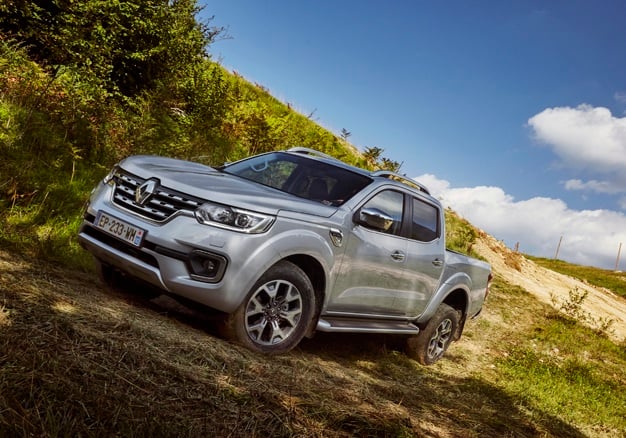
Slovenia - It’s named after a North American state. Its family name is French yet it’s manufactured in Mexico, Argentina and Spain.
Renault’s first stab at a four-wheel drive, one-ton bakkie – the Alaskan – could not be more cosmopolitan.
Earlier in September, it was unveiled to the international motoring press in Slovenia and it’s set to arrive locally next year.
According to Renault SA: "The Renault Alaskan is set for introduction in South Africa in the second half of 2018 though local prices and specifications will only be finalised closer to the launch date."
Sharing traits with the Navara
Its DNA is twistier than a bowl of spaghetti, that’s because globally, Renault owns Nissan, which means the Alaskan is mechanically identical to the Navara, which has been on sale overseas for over two years – but only locally since March 2017. As if that’s not a mouthful already, Mercedes-Benz has decided to base their upcoming X-Class bakkie – which launches next month – also on the Renault-Nissan platform.
(Nearly) Ford-besting power
Only one diesel engine – a 2.3-litre four cylinder offering two outputs – powers the Alaskan. The entry 160 dCi engine is a single-turbo unit and develops 120kW and 403Nm. The higher-spec 190 dCi has two asymmetrically-sized turbos – a smaller one for chasing ponies at low-engine speeds while a larger turbo kicks in later. The more powerful diesel develops 140kW/450Nm. The claimed average fuel consumption figure is 6.3 litres/100km and both a six-speed manual and a seven-speed automatic transmission is available.
Apart from the 3.2-litre Ford Ranger (147kW/470Nm), the Alaskan’s stats makes it the most powerful as well as the most frugal in its class. An equivalent VW Amarok has 132kW/400Nm and consumes 7.9litres/100km and a Toyota Hilux 2.8 130kW/420Nm/7.6l/100km.
The Alaskan’s load box stretches over 2.46m2, the tailgate platform can endure up to 500kg and the ground clearance is 230mm.
What do you think of Renault's Alaskan bakkie? What will it take for Renault to go up against SA bakkie rivals such as the Toyota Hilux and Ford Range? Email us
Retained in translation
While (keylessly) opening the Renault’s door for the first time, you’d be forgiven for thinking that you’ve got into the wrong car. Everything is unmistakably Nissan; from the type face on the dials to the pushbutton controls (yes, even the key). Only the silver diamond on the steering wheel boss reminds one that you’re now in Toulouse instead of Tokyo.
Stylish bakkie
While inside only the Alaskan’s steering wheel and radio is different from the Navara’s, for the exterior Renault went out of their way to distinguish their double-cab from its Japanese blood brother. Neither iteration has been shy with the chrome treatment, although the Frenchman’s corporate face appears more modern (and its toothed grille more muscular). By contrast, after just a few months the Navara is in a need of Oil of Olay.
Lifestyle bakkie
As has become de rigeur with the lifestyle bakkies of today, the Alaskan’s cabin is more reminiscent of a passenger car than that of a workhorse. There’s a variety of hard and soft surfacing and the seats and steering wheel are leather-clad. A whopping 20 storage spaces, a trio of 12V sockets, hill start and hill descent control and seven airbags are all standard, while the flagship model further features dual-zone climate control whose temperature can be individually controlled between front and rear.
The front seats (of which the driver’s is heated and eight-way electrically adjustable) are claimed to be inspired by NASA’s “zero gravity” design that sees the occupants’ body mass being evenly distributed over the entire surface of the seat to prevent fatigue and discomfort during long-distance driving.
A centrally-mounted seven-inch touchscreen displays navigational information – along with providing real-time traffic updates for more efficient route-planning – as well as a 360 degree top-down view when parking or needling the Alaskan through tight spaces. In addition, each wing mirror houses a built-in camera whose image can be displayed on the screen; useful during off-road manoeuvres for the driver who sits on one side but requires another pair of eyes on the passenger side.
A secondary five-inch screen is sandwiched between the speedo and the rev clock and displays amongst others information about the fuel consumption and four wheel-drive settings.
So is the Renault Alaskan’s footwork as fancy as its brain?
At its launch the new Nissan Navara’s rear suspension was announced to great fanfare. That’s because it’s configured as a multilink layout instead of the traditional leaf springs (stronger, but provide a less comforting ride). Neither the Navara’s respective one-ton loading and 3.5 ton towing abilities – and by extension those of the Alaskan – are affected by this deviation; in fact the ride quality is greatly improved on all surfaces, even with 18” tyres fitted. Lesser models will get 16” tyres.
Highway driving showed the Alaskan to be an exceptionally comfortable cruiser. Wind, road and mechanical noise are nearly imperceptible and it feels more stable than is expected from a vehicle sporting a tall centre of gravity. The engine – while capable on paper – seems a little sluggish at first and gets a bit thrashy at speeds above 3000rpm, but it behaves no worse than any of its competitors.
If the Alaskan achieves just one goal, then it’s that despite their agricultural background, the double-cab driving experience increasingly mimics that of road cars with stunning authenticity. And that’s quite an accolade.
The incessant rain in the preceding weeks of the launch turned the off-roading exercise to a mud bath, while also limiting the number of activities on offer. But even on the wrong type of tyres (all-purpose rather than dedicated off-road) the Renault conquered its conditions and there’s no reason to expect it to underperform against its more established competitors.
Would you buy one?
That’s the crux of the matter; what blue-blooded bakkie disciple would turn his back on the segment stalwarts in favour of a relatively unproven brand in the pick-up market?
Renault South Africa are admitting that they’ll have to price the Alaskan competitively if they are to make a dent in the seemingly impenetrable lifestyle bakkie segment, where which most of the Alaskan’s rivals are priced at around R500k – 600k each. That’s point number one. But don’t forget, this is a Nissan. So you’re getting a Frenchier, prettier and equally reliable Navara… for cheaper than a Navara.
Yes, the Alaskan is bizarrely named after a region where it’s not even sold. And it’s a pain to have to explain its origins but a braai with cognac and Coke, at least in SA, will forever be more appealing than a meditation session with rice wine and Sushi.




 Publications
Publications
 Partners
Partners




